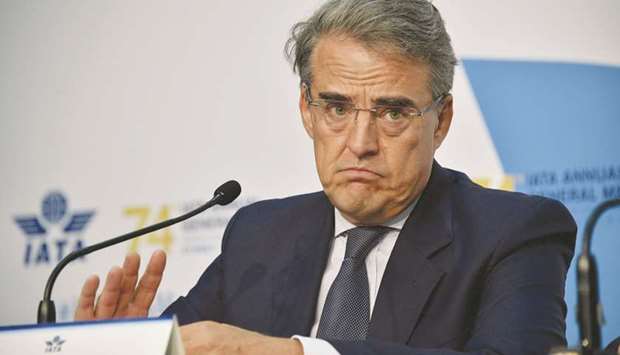Middle East airlines, driven by Qatar Airways and some other GCC-based carriers, are expected to post a net profit of $1.3bn this year, up from $1bn clocked in 2017, the International Air Transport Association (IATA) said here yesterday.
This, according to IATA’s director general and CEO Alexandre de Juniac, translates into $5.89 per passenger compared with $4.81 in 2017.
Middle East airlines, an IATA report presented at the World Air Transport Summit at the International Convention Centre here yesterday, showed generating a recovery, though more muted than in Latin America. The rise of oil prices is helping revenues and the oil-based economies in the region, aero-political relations with the US have improved, while the Gulf airlines have substantially curbed growth.
Globally, IATA expects airlines to achieve a collective net profit of $33.8bn (4.1% net margin) in 2018. De Juniac said this is a solid performance despite rising costs, primarily fuel and labour, but also the upturn in the interest rate cycle.
These rising costs are the main driver behind the downward revision from the previous forecast of $38.4bn in December 2017.
In 2017, airlines had earned a record $38bn (revised from the previously estimate of $34.5bn). Comparisons to this, however, are severely distorted by special accounting items such as one-off tax credits which boosted 2017 profits.
Profits at the operating level, though still high by past standards, have been trending slowly downwards since early 2016, as a result of accelerating costs.
De Juniac said, “solid profitability is holding up in 2018, despite rising costs. The industry’s financial foundations are strong with a nine-year run in the black that began in 2010.
And the return on invested capital will exceed the cost of capital for a fourth consecutive year. At long last, normal profits are becoming normal for airlines. This enables airlines to fund growth, expand employment, strengthen balance sheets and reward our investors.”
In 2018, the return on invested capital is expected to be 8.5% (down from 9% in 2017). This still exceeds the average cost of capital, which has risen to 7.7% on higher bond yields (7.1% in 2017). This, he said, was critical for attracting the substantial capital needed by the industry to expand its fleet and services.
Passenger air travel is forecast to expand by 7% in 2018. This is slower than the 8.1% growth recorded for 2017 but still faster than the 20-year average (of 5.5%) for the sixth consecutive year. Demand is getting a boost from stronger economic growth and the stimulus from new city-pair direct services.
Capacity is expected to grow by 6.7% (the same pace as in 2017). The passenger load factor is expected to be 81.7%, up a little on 2017 (81.5%).
Total passenger numbers are expected to rise to 4.36bn (up 6.5% from 4.1bn in 2017). Passenger yields are expected to grow by 3.2% in 2018 after a 0.8% decline in 2017. “This will be the first year for strengthening yields since 2011, driven upwards by the 5.2% rise in unit costs,” IATA said.

De Juniac: Solid profitability is holding up in 2018.

